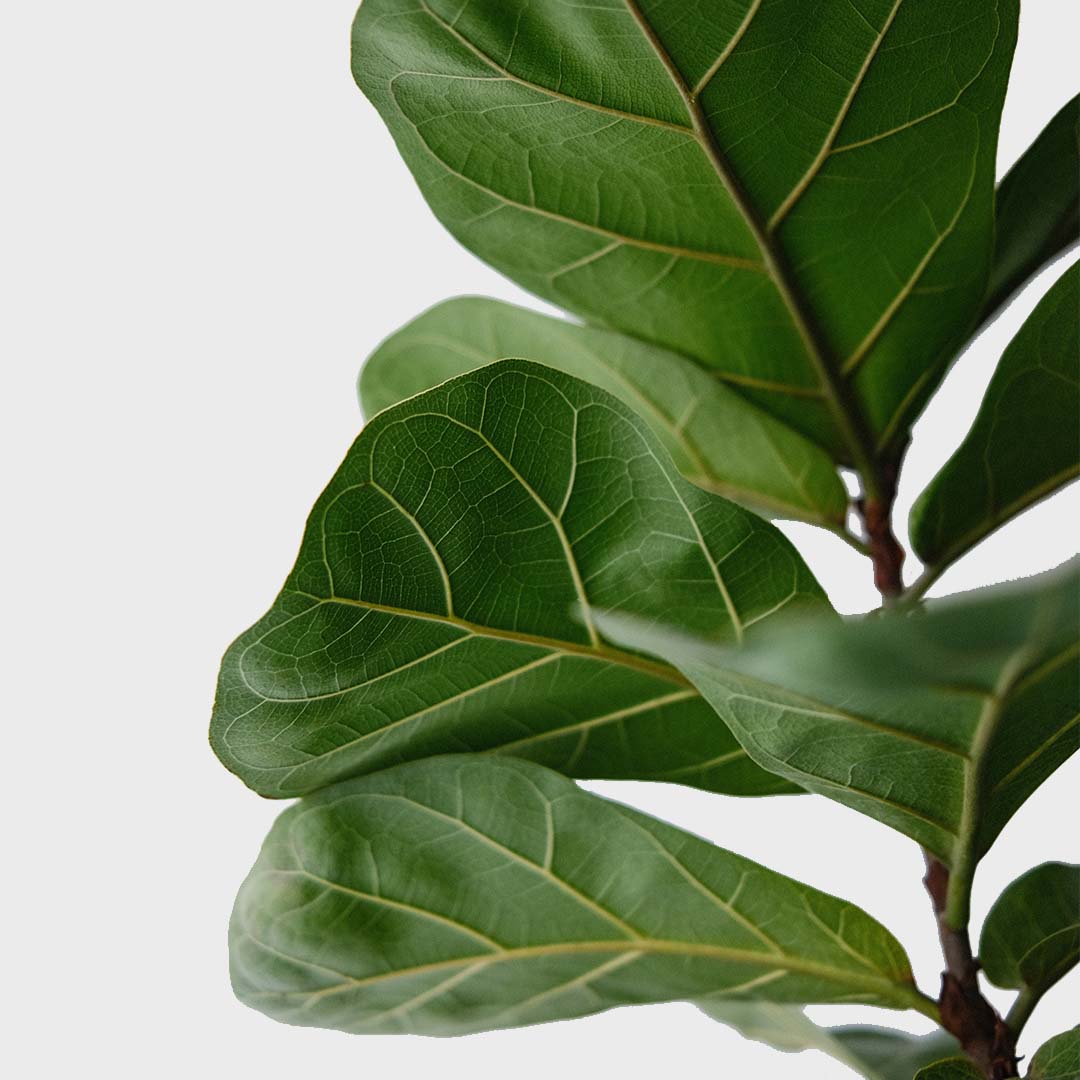
Deliver to
Europe
 English
EnglishFicus plants belong to the fig genus family. They are pretty popular as indoor plants, and they usually look like small trees with a trunk and a canopy. Ficus plants can grow up to 18 metres in the wild, but indoors, their growth is slow. Indoors a Ficus can grow as tall as 2 metres. A Ficus is native to tropical areas and is used as decoratives, food, and even as religious symbols in some cultures. Ficus plants can be quite demanding to care for, but they can grow for decades if cared for well.


Medium light
Water once a week
Toxic
Air-purifying
The Ficus likes to be placed in a spot with lots of light. Not all species tolerate bright light well. It is best to place the plant in medium bright light. The Ficus prefers a spot next to a window on the west or east. A spot near the south is of course also possible. Make sure that the plant is at least 2 metres away from the window. A spot near the north probably has too little light. If some species of the Ficus receive too much light, it can result in leaf loss and scalding.
It is therefore important to always keep the soil of the Rubber plant slightly moist. You can check this by putting your finger in the soil. It is best to water the Ficus once a week all year round. In the winter it may be a smaller amount.
In addition to the watering you may need to create a humid environment if your indoor space is too dry. Spraying regularly with a plant sprayer can ensure that the root ball doesn't dry out. Leaves should be washed with a lukewarm shower or using a damp rag to avoid vermint.
The Rubber plant uses a lot of energy from spring onwards to make new leaves. As a result, the plant needs extra nutrients. You can provide these nutrients by means of plant nutrition. We recommend giving plant nutrition once every two weeks. From spring until autumn. After autumn and in winter it is better not to give extra nutrients. In the winter, plant nutrition can actually be harmful for the Rubber plant!
Repotting the Rubber plant is necessary every 2 years. Repotting the plant gives the plant new nutrients and more room for root growth. The airier soil is also very good for the water flowing through. The best period to repot is spring.
The most ideal temperature for a Ficus plant, such as the Ficus benjamina (Weeping Fig) or Ficus elastica (Rubber Tree), is typically between 15 to 24 degrees Celsius. It prefers a moderate temperature range and can tolerate slightly cooler conditions.
Pruning a Ficus can be done for maintenance and shaping purposes. It helps remove dead or yellowed leaves, control the size of the plant, and promote branching for a fuller appearance. Trimming back long branches can also help maintain a more compact and aesthetically pleasing shape. Clean and sharp pruning tools should be used to make clean cuts and minimize any stress to the Ficus plant.
A Ficus is very susceptible to diseases and pests. Is it sticky around the flowerpot of Ficus? Maybe there's aphid active. An aphid gives off a sticky substance, which you can easily recognize it from. Make sure you keep a close eye on Ficus leaves. The sooner you encounter vermin, the better.


There can be several reasons why a Ficus drops its leaves. The most important reasons are:
Especially when buying a Ficus in the winter, they can drop a lot of leaves. A relocation in combination with little light in the winter is not ideal.
When your Ficus Lyrata gets new leaves and has red-brown spots on them, we understand that you might panic. These spots occur when small cells of the new leaf, which contain a lot of water, burst open and leave brown spots. The red-brown spots will fade away when the leaves grow bigger and older. This is also known as 'Edema'. It is a natural process of Ficus Lyrata that has no effect on the health of the plant.
If Ficus gets too little light, it will have no energy for (leaf) growth. In such a situation, place the Ficus in a location with more indirect light.
In nature, a Ficus can grow about 30 metres high. As an indoor plant, Ficus will not reach this height, but 2 metres should do.
We don't recommend taking a Ficus outside in the summer. Moving the plant can be very stressful for Ficus. A move can cause the leaves to fall out. Ficus leaves can also burn if they get too much light outside. Decide for yourself!